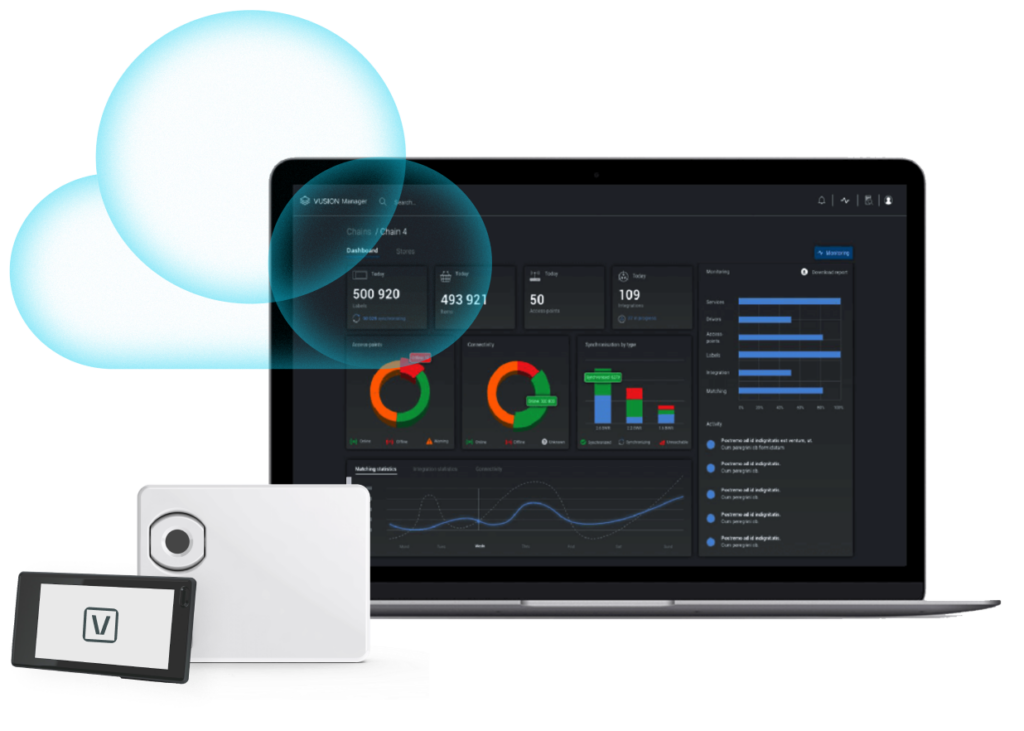Have you ever wondered how much easier managing a retail business could be with real-time data on every product? Well, wonder no more. Thanks to IoT technology, this is becoming a tangible reality for retailers worldwide. In fact, it is changing how you operate and engage with your customers.
This shift towards a connected, data-driven retail environment offers outstanding opportunities. By leveraging the power of the Internet of Things, you can gain real-time insights into consumer behavior, optimize supply chains, and create personalized, frictionless shopping journeys.
So, let’s explore how IoT technology is revolutionizing the retail landscape.
What is IoT?
The Internet of Things, or IoT, might sound complex, but it’s a simple concept. It’s basically a network of physical objects called “things” fitted with sensors, software, and different technologies. This allows them to connect and exchange data with other devices and systems over the Internet.
These objects could be anything like a light bulb that can be switched on using a smartphone.
IoT in Retail
Let’s look at some specific examples of how this technology is being used in retail:
- Smart Shelves—These shelves have sensors that can tell when items are running low. This technology helps ensure that products are always in stock so customers aren’t disappointed. It also alerts staff when it’s time to reorder products or when an item is in the wrong place.
- Smart Carts – Shopping carts can be fitted with scanners, allowing your customers to check out items as they add them. This speeds up the checkout process and reduces lines. Some smart carts can even suggest items to shoppers based on what’s already in their cart, making shopping quicker.
- Customer Tracking – Sensors around the store can track where customers spend most of their time. This information helps you understand which areas and products are most popular and need attention. It also helps arrange the store layout better to improve the flow of customer movement.
Managing IoT Devices
When you use IoT devices, like sensors and smart tags, you gather lots of data about products and customer behavior. Now, managing all these devices and the data they produce can be a big challenge.
This is where a cloud solution for retail comes into play, making it easier and more efficient. Simply put, a cloud platform is a system on the internet that stores and processes data. It enables you to track, monitor, and manage digital price tags and IoT devices from anywhere, anytime.
But the benefits extend far beyond convenience alone. With robust security measures in place, sensitive retail data remains safe against potential threats. What’s more, the scalability inherent in cloud solutions ensures that you can adapt to evolving demands without missing a beat.

Benefits of IoT Devices
Enhanced Inventory Management
IoT has transformed how stores manage their inventory. By using real-time tracking, you can keep accurate stock levels, ensuring you always know how much of each product you have. But why is this important? It prevents stockouts and reduces waste, as stores don’t over-order items that aren’t selling well.
Optimized Pricing and Promotions
With IoT, pricing can adjust based on demand. This means if a lot of people are buying a product, the price might go up, but if it’s not selling, the price could drop. Also, it allows for personalized offers directly to customers’ smartphones. This personal touch makes customers feel special and increases their loyalty to the store.
Improved Customer Experience
Stores are becoming more interactive with product displays and smart shelves that react as customers pass by. Augmented reality and virtual try-ons are also becoming common, letting customers see how clothes might look on them without actually trying them on. All this is making shopping quicker and more enjoyable.

Data-Driven Decision Making
IoT helps stores understand where customers spend most of their time through foot traffic analysis. This information can be used to optimize the store layout, placing popular items where they are easy to find. In addition, there are heat maps that show hot spots within the store. This helps place products in ways that increase sales. Also, insights into customer behavior and preferences help stores tailor their offerings to better meet customer needs.
Enhanced Security and Loss Prevention
Smart cameras and analytics work together to prevent theft, alerting staff when suspicious activity occurs. Additionally, IoT helps monitor environmental conditions, which is crucial for stores with sensitive items like electronics or perishable foods that need specific temperatures. This ensures products stay in perfect condition and reduces losses due to damaged goods.
Final Thoughts
We hope you now understand how this technology is changing the retail industry. As retailers, embracing IoT is essential to staying competitive and meeting your customers’ needs. Thank you for joining us on this journey into the future of retail.


